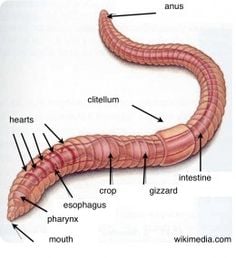Optimizing the Perks of Red Wiggler Worms: A Comprehensive Manual for Home Gardeners and Urban Farmers
In the realm of sustainable gardening methods, red wiggler worms stand as unrecognized heroes, silently changing natural waste right into nutrient-rich spreadings that can function marvels for dirt health and wellness. By checking out the complexities of exactly how to efficiently care for and optimize the advantages of red wiggler worms, individuals can unlock a wealth of opportunities for improving the sustainability and productivity of their horticulture undertakings.
Understanding Red Wiggler Worms
Red Wiggler worms, renowned for their efficient composting capabilities, are a species of earthworms commonly made use of in vermiculture practices. These worms, clinically understood as Eisenia fetida, grow in decaying natural material, making them optimal prospects for composting.
One secret feature of Red Wiggler worms is their reproductive rate. These hermaphroditic creatures possess both male and female reproductive body organs, enabling them to duplicate rapidly under favorable conditions. A fully grown Red Wiggler can produce numerous offspring in a brief duration, ensuring a consistent populace within a composting system.

Establishing a Worm Container
When establishing a worm bin for vermiculture functions, correct preparation and focus to detail are crucial for producing a conducive atmosphere for Red Wiggler worms. Begin by selecting an appropriate container for your worm container. This can be a plastic or wood container with a lid to maintain wetness levels and secure the worms from light. Ensure that the bin has drainage holes at the base to avoid waterlogging.

Area the worm container in a great, dark location far from direct sunlight and severe temperatures. Routinely monitor the moisture degrees, adding water if the bedding really feels completely dry or flaky. Feed the worms a balanced diet of fruit and veggie scraps, staying clear of citrus fruits, onions, and spicy foods. By adhering to these actions, you can set up a thriving worm container that will successfully refine organic waste into nutrient-rich vermicompost for your yard.
Feeding and Keeping Worms
Ensuring a well balanced and healthy diet is crucial for the health and performance of Red Wiggler worms in a vermiculture system. Red Wigglers are starved eaters, qualified of consuming their own body weight in raw material daily. To preserve a thriving worm population, it is vital to give them with a selection of food scraps such as vegetables and fruit peels, coffee grounds, tea bags, and crushed eggshells. However, it is necessary to stay clear of feeding them citrus fruits, onions, garlic, milk products, meat, and oily foods as these can be damaging to the worms or create unpleasant smells in the bin.
Proper wetness levels are also crucial for the wellness of Red Wiggler worms. By vigilantly checking their diet regimen, dampness, and ecological problems, home gardeners and urban farmers can sustain a healthy and balanced and productive Red Wiggler worm population for composting purposes.
Harvesting Worm Spreadings
To effectively draw out nutrient-rich worm spreadings from the vermicompost, a methodical harvesting process is essential for making best use of the composting advantages. The very first step in harvesting worm spreadings is to motivate the worms to move to one side of the container.
After the spreadings have actually been gathered, it is essential to separate any type of staying worms from the spreadings to stay clear of harming them during storage or application. One reliable approach is to produce cone-shaped heaps of spreadings under intense light. Worms will naturally move away from the light, enabling for very easy splitting up and removal.
Finally, the collected worm castings ought to be saved in a great, dark, and dry area to preserve their high hop over to these guys quality and efficiency link as a nutrient-rich dirt modification. By adhering to these actions, home garden enthusiasts and city farmers can optimize the advantages of red wiggler worms in their vermicomposting systems.
Making Use Of Worm Castings in Horticulture
The unification of nutrient-rich worm spreadings right into yard dirt can significantly enhance plant development and total dirt wellness. Worm spreadings, likewise referred to as vermicast, are an all-natural fertilizer created by red wiggler worms as they break down organic matter. These spreadings are abundant in necessary nutrients like nitrogen, phosphorus, potassium, and valuable germs that advertise plant growth and improve soil framework.
When making use of worm spreadings in gardening, it is important to mix them thoroughly into the dirt or utilize them as a leading dressing around plants. The slow-release nature of worm castings ensures a steady supply of nutrients to plants in time, decreasing the danger of nutrient leaching and advertising long-term soil fertility. In addition, worm spreadings aid enhance soil oygenation, water retention, and microbial task, developing a healthy and balanced setting for plant origins to prosper.

Conclusion
In conclusion, the application of red wiggler worms in home horticulture and urban farming can considerably profit dirt health and plant development. By understanding exactly how to establish up and preserve a worm container, feed the worms correctly, and gather their nutrient-rich spreadings, garden enthusiasts can make best use of the advantages of these earthworms.
In the realm of sustainable horticulture practices, red wiggler worms stand as unhonored heroes, quietly changing organic waste into nutrient-rich spreadings that can work wonders for soil health and wellness.When developing a worm container for vermiculture objectives, proper prep work and focus to why not try these out information are necessary for developing a favorable atmosphere for Red Wiggler worms. The very first action in collecting worm spreadings is to urge the worms to move to one side of the container. Worm spreadings, additionally understood as vermicast, are an all-natural plant food produced by red wiggler worms as they damage down natural issue. By comprehending exactly how to set up and keep a worm container, feed the worms appropriately, and gather their nutrient-rich castings, garden enthusiasts can make best use of the advantages of these earthworms.